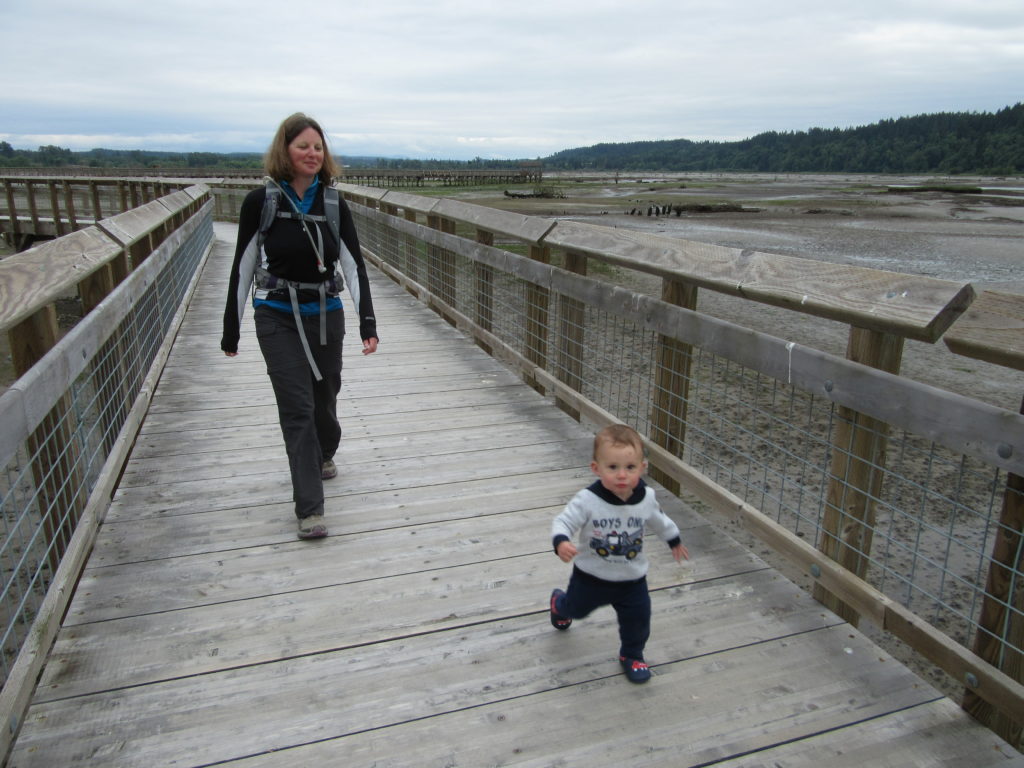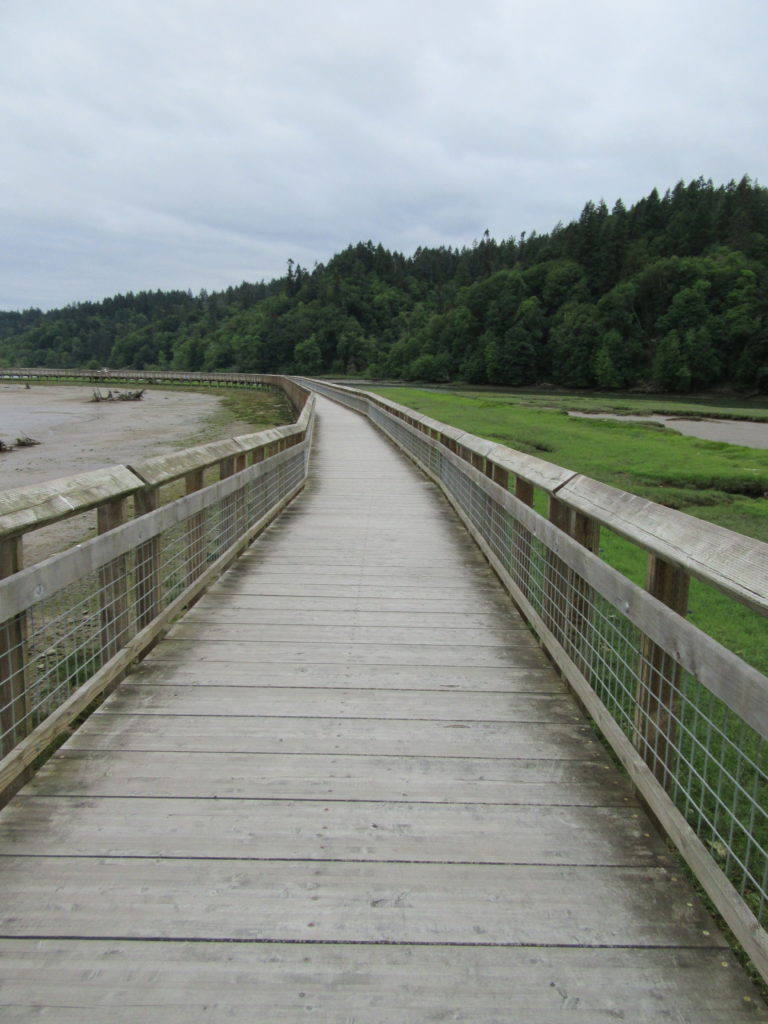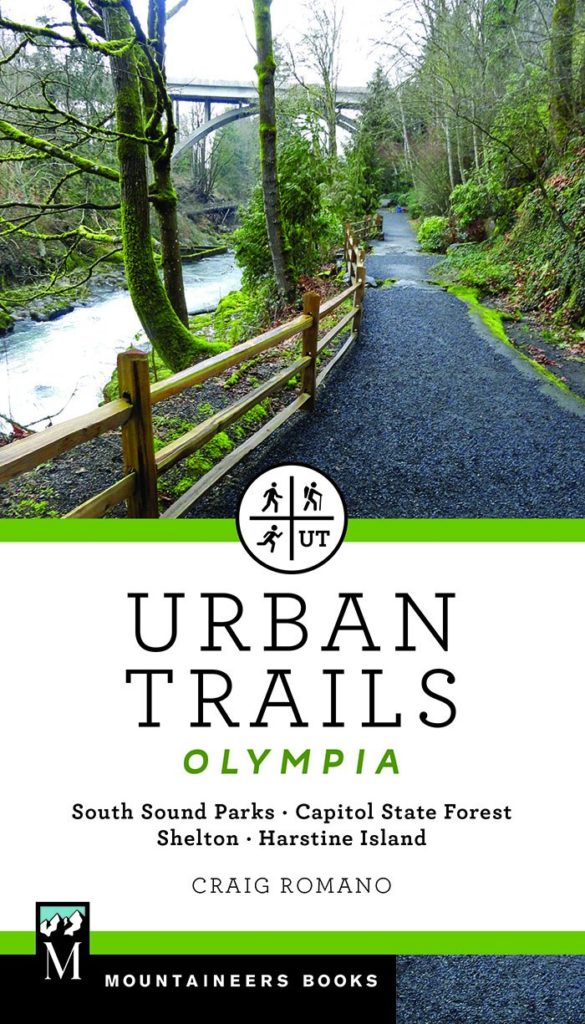Billy Frank Jr. Nisqually National Wildlife Refuge– Delightful hiking on the delta

Quick Facts:
Location: Nisqually River Delta
Land Agency: United States Fish and Wildlife Service
Roundtrip: 4.2 miles
Elevation Gain: minimal
Contact: Billy Frank Jr. Nisqually National Wildlife Refuge
Map: Refuge Map
Notes: $3.00 per four adults entrance fee; or Interagency Passes accepted; dogs prohibited; Northern end of the Nisqually Estuary Trail is closed from October to late January for hunting season; trails closed at dusk.
Access: From Olympia or Tacoma take I-5 to Exit 114. Then turn left from Olympia or right from Tacoma and follow Brown Farm Road for .7 mile to parking and trailhead at the Refuge Visitor Center.
Good to Know: kid-friendly, interpretive, snow-free winter hike, exceptional birdwatching, wildlife observation
Wedged between Olympia and Tacoma, the 3,100-acre Billy Frank Jr Nisqually National Wildlife Refuge protects one of the last remaining relatively undeveloped river deltas in southern Puget Sound. An important stop for migratory birds, the refuge is home to plenty of species year round as well. One of the best bird and wildlife viewing spots in the Puget Trough, what really makes visiting Nisqually a sheer delight is its more than one mile elevated boardwalk trail.

The refuge was established in 1974 at the mouth of the glacier-fed Nisqually River. Much of the river’s delta was part of the Brown Dairy Farm prior to the establishment of the refuge. During this period, more than five miles of dikes were built to reclaim salt flats. In 2009, refuge officials removed four miles of the dikes restoring more than 760 acres of tidal salt flats. The large twin barns of the old farm however still remain where interpretive signs explain the refuge’s history and ecological importance.
In 2015 the refuge became known as the Billy Frank Jr Nisqually NWR. Frank Jr who died in 2014 was a member of the Nisqually Tribe. Through many acts of civil disobedience, he challenged the state and federal governments to honor the Medicine Creek Treaty (particularly tribal hunting and fishing rights) which was signed in 1854 on land now within the refuge. He was posthumously awarded the Presidential Medal of Freedom by President Obama in 2015. Having the refuge named after him is a fitting honor.
There are basically two trails within the refuge, the Twin Barns Loop and the Nisqually Estuary Trail. You can opt for an easy one mile hike on the Twin Barns Loop—or extend your outing with the 1.6 mile Nisqually Estuary Trail. Start your adventure from the visitor center heading counter clockwise on the Twin Barns Loop. This entire trail is a wide boardwalk skirting sloughs, dikes, and wetland pools that teem with wildlife.
At the historic Twin Barns check out the interpretive panels and wildlife viewing areas. More than 300 species of birds, amphibians, and mammals inhabit the refuge. Then head onto the Nisqually Estuary Trail following a dike at first—then onto a 1.1 mile long snaking elevated boardwalk. It is one of the most unique and pure-delight to walk trails within the state. The boardwalk will take you out into the delta providing excellent wildlife viewing opportunities and good views of Anderson Island and the Tacoma Narrows. When the tide is out you’ll walk over glistening and gurgling mud and salt flats. Depending on the season, look for eagles, dunlins, sandpipers, falcons, merlins, purple martins and geese. Follow the boardwalk back to the Twin Barns and complete the loop by walking past more waterfowl and amphibian rich wetland pools.

For detailed information on this trail and many more in the region, pick up a copy of my NEW Urban Trails Olympia (Mountaineers books).
This wonderful guide includes trails throughout Thurston County, in Shelton, on Harstine Island, and in the Capitol State Forest. Pick up your copy today!
For information on other things to do in the area and on where to stay, consult Northwest TripFinder.